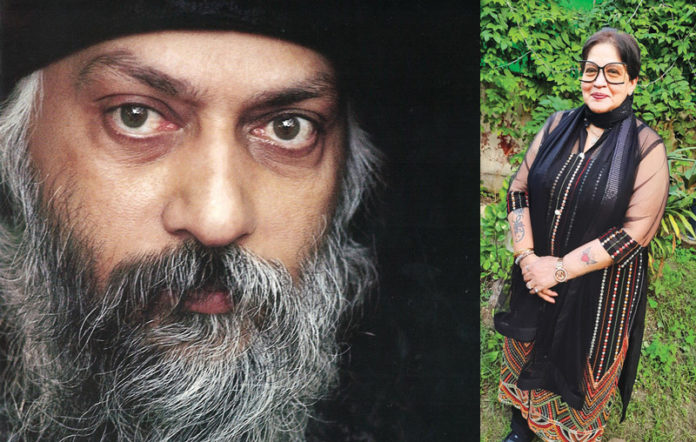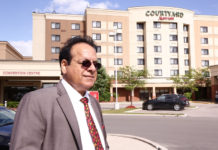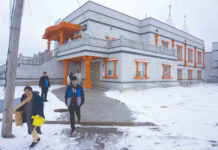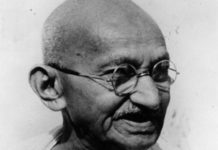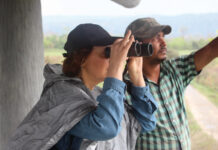On the 31st death anniversary of the new-age Indian guru, Delhi-based Neelam Mahajan Singh remembers Bhagwan Rajneesh whom she knew personally
NEW DELHI: Delhi-based journalist-author and human rights solicitor Neelam Mahajan Singh was one of the few media people who knew Bhagwan Rajneesh or Osho personally as she attended his meditation classes at his Pune ashram and then made a documentary on him.
On Osho’s 31st death anniversary (January 19), she goes down memory lane and recalls her one-on-one meetings with him and her impressions of the controversial guru in this interview.
She says Osho advocated a free life not sex orgies and was ahead of his times as most of his prophecies have come true. She also explains what he meant when he said he was `the rich man’s guru’ and what kind a `new man’ he wanted to create.
Excerpts from the interview:
Q: You met Osho in 1988. What were your first impressions of him?
A: I was on training in the Film and Television Institute of India, Pune, for TV News Production Course. After being a Professor of History in the University of Delhi, I had joined Prasar Bharati (Doordarshan) News Division as a senior correspondent-editor.
I was absolutely impressed with Osho’s messages. I started attending the evening meditations at the Buddha Hall of Osho International. In the process, I met Osho personally. It was a crisis period for Osho and his followers after the terrible experience in Rajneeshpuram in Oregon in the US.
2: Talk about the documentary you made on him. What did it focus on?
A: ‘Messiah of Love; Osho’ was the name of my documentary on Osho Rajneesh. I made it as part of my studies at FTII Pune.
The film portrayed the inner goings-on in the commune. Osho’s closest and inner core team became my friends. Dr. Amrito, Jayesh, Swami Tathagat, Swami Chaitanya Keerti, Maa Anando, Maa Yoga Neelam; are amongst others.
The lifestyle of Osho was very pompous. Even within the commune he would come to the Buddha Hall in a Rolls Royce.
This short film has interviews with Osho at various locations of the commune. There are testimonial interviews of Jayesh, Amrito, Neelam, Tathagat, Keerti, etc. Jayesh and Amrito have taken legal copyright rights on the legacy of Osho. Many of the core team members aren’t alive now.
The documentary was telecast on national hook-up of Doordarshan several times. There was an excellent review of it by Sevanti Ninan.
Osho was really unwell at that time. I met him several times, one on one.
3: Your impressions of sanyasin life at Osho’s Pune Ashram?
A: The life in Osho’s commune was quite disciplined yet free. Osho was getting terribly negative media coverage. He advocated a free life but that doesn’t mean sex orgies, as it was alleged.
I was so mesmerized by Osho.I attended the Mystic Rose, White Swan, Transcendental Meditation, in the presence of Osho. I was passed as one of the foreigners attending his evening meditations!
As I said, Osho was quite buoyant. He would come to the Buddha Hall in a Rolls Royce, to the mystical live music by International bands ! His disciples would be clapping and dancing. Once Osho came on stage, he would urge the crazy followers to relax and do deep breathing !
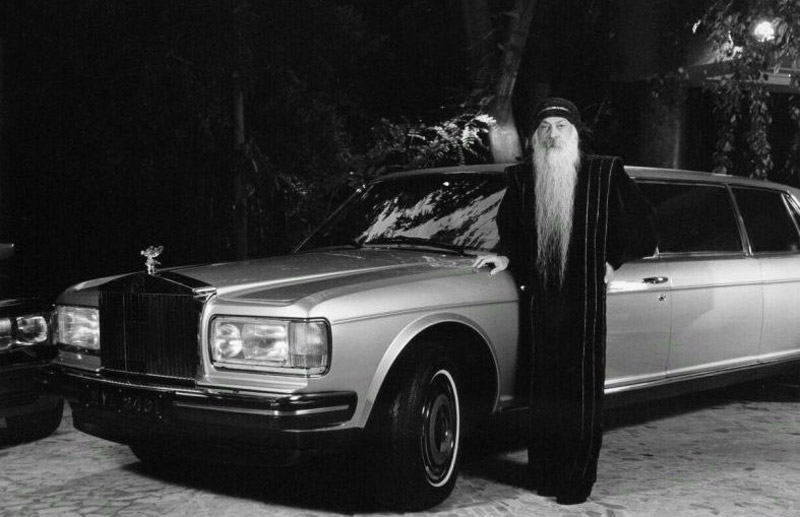
I have personally experienced, electrifying moments, trance, divine light at the Buddha Hall. I’m not judgemental, though there were a few points on which I had a different point of view from Osho.
But Osho had deep feelings for me, he blessed me and wanted me to stay at the commune.
During his lifetime, Osho was viewed as a controversial neo-religious movement leader, a mystic. In 1960s, he travelled throughout India as a motivational speaker.
Rajneesh emphasized the importance of meditation, mindfulness, love, celebration, courage, creativity, and humour —qualities that he viewed as being suppressed by adherence to static belief systems and dogmas.
In advocating a more open attitude to human sexuality, he caused controversy in India during the late 1960s and became known as “the sex guru”. The same is, now approved by the law.
In 1970, Rajneesh spent time in Mumbai initiating followers known as “neo-sannyasins”. He expanded his spiritual teachings and commented extensively in discourses on the writings of religious traditions, mystics, and philosophers from around the world.
In 1974, Rajneesh relocated to Pune, where an ashram was established and a variety of therapies, incorporating methods first developed by the ‘Human Potential Movement’ were offered to the western block.
By the late 1970s, the tension between the Janata Party government of Prime Minister Morarji Desai and the movement led to curbs on the ashram’s development and claims of back taxes estimated at $5 million.
In 1981, the Rajneesh movement’s efforts, refocused on activities in the United States and Rajneesh relocated to Rajneeshpuram in Wasco County, Oregon. Almost immediately the movement ran into conflict with the US authorities.
A succession of legal battles concerning the ashram’s construction and continued development curtailed its success. In 1985, in the wake of a series of crimes by his followers, including a mass food poisoning attack with salmonella bacteria and an aborted assassination plot to murder U.S. Attorney Charles H. Turner, Rajneesh alleged that his personal secretary Ma Anand Sheela and her close supporters had been responsible.
He was later deported from the United States in accordance with an Alford plea bargain.
After his deportation, 121 countries denied him entry. He ultimately returned to his Pune ashram, where he died in 1990.
Osho’s teachings had an impact on Western New Age thought and their popularity has reportedly increased since his death.
His teachings, delivered through his discourses, were not presented in an academic setting, but interspersed with jokes. Rajneesh revelled in paradox and contradiction, making his work difficult to summarize.
He delighted in engaging in behaviour that seemed entirely at odds with traditional images of enlightened individuals; his early lectures in particular were famous for their humour and their refusal to take anything seriously. All such behaviour, however capricious and difficult to accept, was explained as “a technique for transformation” to push people “beyond the mind”.
He spoke on major spiritual traditions, including Jainism, Hinduism, Hassidism, Tantrism, Taoism, Sufism, Christianity, Buddhism, on a variety of Eastern and Western mystics and on Hindu sacred scriptures such as the Upanishads and the Sikh scripture Guru Granth Sahib.
The sociologist Lewis F. Carter saw his ideas as rooted in Hindu advaita, in which the human experiences of separateness, duality and temporality are held to be a kind of dance or play of cosmic consciousness in which everything is sacred, has absolute worth and is an end in itself.
Osho’s belief in the unity of opposites recalls Heraclitus, while his description of man as a machine, condemned to the helpless acting out of unconscious, neurotic patterns, has much in common with Sigmund Freud and George Gurdjieff. His vision of the “new man” transcending constraints of convention is reminiscent of Friedrich Nietzsche’s Beyond Good and Evil; his promotion of sexual liberation bears comparison to D. H. Lawrence; and his “dynamic” meditations owe a debt to Wilhelm Reich.
‘Ego and the mind’, were his subjects.
According to Rajneesh, every human being is a Buddha with the capacity for enlightenment, capable of unconditional love and of responding rather than reacting to life, although the ego usually prevents this, identifying with social conditioning. False needs and conflicts and an illusory sense of identity is nothing but a barrier of our dreams. Otherwise man’s innate being can flower, in a move from the periphery to the centre.
Mind’s appeal to the past, he said, deprives human beings of the ability to live authentically in the present, causing them to repress genuine emotions and to shut themselves off from joyful experiences that arise naturally when embracing the present moment: “The mind has no inherent capacity for joy…. It only thinks about joy.” The result is that people poison themselves with all manner of neuroses, jealousies, and insecurities.
Rajneesh argued that psychological repression, often advocated by religious leaders, makes suppressed feelings re-emerge in guise. Instead of suppressing, people should trust and accept themselves unconditionally. This should not merely be understood intellectually, as the mind could only assimilate it as one more piece of information: instead meditation was needed.
Osho presented meditation not just as a practice but as a state of awareness to be maintained in every moment, a total awareness that awakens the individual from the sleep of mechanical responses conditioned by beliefs and expectations.
He suggested more than a hundred meditational techniques. His own “active meditation” techniques are characterized by stages of physical activity leading to silence. The most famous of these remains Dynamic Meditation: TM, which has been described as a kind of microcosm of his outlook.
Performed with closed or blindfolded eyes, it comprises five stages, four of which are accompanied by music. First the meditator engages in ten minutes of rapid breathing through the nose. The second ten minutes are for catharsis: “Let whatever is happening happen. … Laugh, shout, scream, jump, shake—whatever you feel to do, do it!”
Next, for ten minutes one jumps up and down with arms raised, shouting Hoo! each time one lands on the flat of the feet. At the fourth, silent stage, the meditator stops moving suddenly and totally, remaining completely motionless for fifteen minutes, witnessing everything that is happening. The last stage of the meditation consists of fifteen minutes of dancing and celebration.
Rajneesh developed other active meditation techniques, such as the Kundalini “shaking” meditation and the Nadabrahma “humming” meditation, which are less animated, although they also include physical activity of one sort or another.
His later “meditative therapies” require sessions for several days. Osho’s Mystic Rose, comprises three hours of laughing every day for a week, three hours of weeping each day for a second week, and a third week with three hours of silent meditation. These processes of “witnessing” enable a “jump into awareness”.
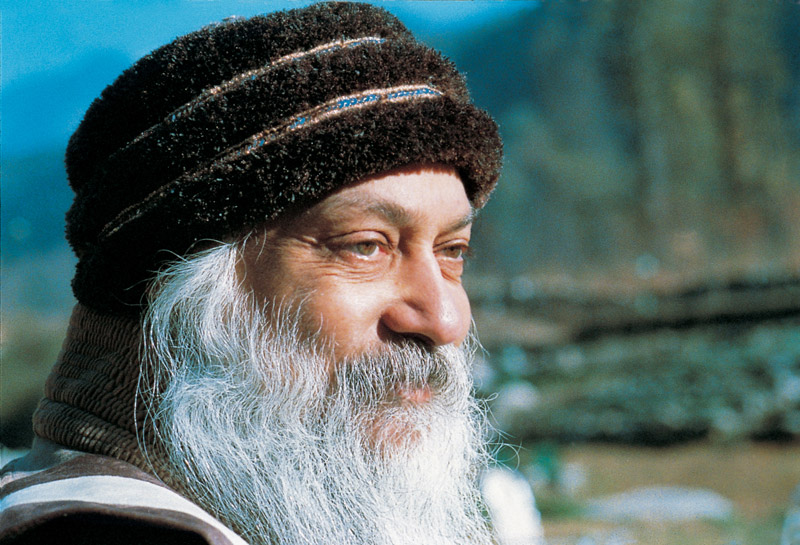

Rajneesh believed such cathartic methods were necessary because it was difficult for modern people to just sit and enter meditation. Once these methods had provided a glimpse of meditation, people would be able to use other methods without difficulty.
Another key ingredient was his own presence as a master: “A Master shares his being with you, not his philosophy. … He never does anything to the disciple.”
The initiation he offered was another such device: “… if your being can communicate with me, it becomes a communion. … It is the highest form of communication possible: a transmission without words. Our beings merge. This is possible only if you become a disciple.”
Ultimately though, as an explicitly “self-parodying” guru, Rajneesh even deconstructed his own authority, declaring his teaching to be nothing more than a “game” or a joke. He emphasized that anything and everything could become an opportunity for meditation.
“New Man” Rajneesh saw his “neo-sanyas” as a totally new form of spiritual discipline, or one that had once existed but since been forgotten.
He emphasized complete inner freedom and the responsibility to oneself, not demanding superficial behavioural changes, but a deeper, inner transformation.
Osho said that he was “the rich man’s guru” and that material poverty was not a genuine spiritual value. He had himself photographed wearing sumptuous clothing and hand-made watches and, while in Oregon, drove a different Rolls-Royce each day – his followers reportedly wanted to buy him 365 of them, one for each day of the year. Publicity shots of the Rolls-Royces were sent to the press.
They may have reflected both his advocacy of wealth and his desire to provoke American sensibilities, much as he had enjoyed offending Indian sensibilities earlier.
Rajneesh aimed to create a “new man” combining the spirituality of Gautama Buddha with the zest for life embodied by Nikos Kazantzakis’ Zorba the Greek. “He (new man) should be as accurate and objective as a scientist … as sensitive, as full of heart, as a poet … [and as] rooted deep down in his being as the mystic.”
His term the “new man” applied to men and women equally, whose roles he saw as complementary; indeed, most of his movement’s leadership positions were held by women.
Osho was ahead of his times as all his prophecies are actualized.
He believed humanity was threatened with extinction due to over-population, impending nuclear holocaust and The new man would no longer be trapped in institutions such as family, marriage, political ideologies and religions.
In this respect, Rajneesh is similar to other counter-culture gurus, and perhaps even certain postmodern and deconstructional thinkers.
Rajneesh said that the new man had to be “utterly ambition-less”, as opposed to a life that depended on ambition. The new man, he said, “is not necessarily the better man. He will be livelier. He will be more joyous. He will be more alert. But who knows whether he will be better or not?
Rajneesh spoke many times of the dangers of overpopulation, and advocated universal legalization of contraception and abortion. He described the religious prohibitions thereof as criminal, and argued that the United Nations’ declaration of the human “right to life” played into the hands of religious campaigners. According to Rajneesh, one has no right to knowingly inflict a lifetime of suffering: life should begin only at birth, and even then, “If a child is born deaf, dumb, and we cannot do anything, and the parents are willing, the child should be put to eternal sleep” rather than “take the risk of burdening the earth with a crippled, blind child.”
“Only the body goes back into its basic elements; the soul will fly into another womb.
“If genetics is in the hands of Joseph Stalin, Adolf Hitler, Benito Mussolini, what will be the fate of the world?” He believed that in the right hands, these measures could be used for good: “Once we know how to change the program, thousands of possibilities open up. We can give every man and woman the best of everything. There is no need for anyone to suffer unnecessarily. Being retarded, crippled, blind, ugly – all these will be possible to change.”
“Science has been a dagger driven into the back of nature. Philosophers have not done much harm—they cannot because they are absolute failures—but science has done much harm. Now the greatest enemy today is science. And why it has been so harmful? – because from the very beginning enmity has been at the base. Hatred, not love…enmity with life, not friendship. Science has created the idea in humanity that they have been teaching survival of the fittest – as if life is just a struggle! The fact is otherwise, just the contrary. Life is a vast cooperation.”
“So the first thing to be understood is: All ideals are perfectionist. Hence, all ideals are inhuman”.
And all ideals cripple and paralyse you. All ideals create a kind of subtle bondage around you, they imprison you. The really free man has no ideals.”
If you make it an ideal, it is inhuman and impossible. All ideals are destructive, and all idealists are the poisoners of humanity. Beware of them!
Live a simple, ordinary life – a day to day existence. Feeling hungry, eat; feeling sleepy, sleep; feeling loving, love. Don’t hanker for anything perfect. Perfection is impossible. And don’t start creating a new ideal out of this simple fact.”
The new man is the first man who recognizes that it is enough to be human. There is no need to be a superman. There is no need to become gods and goddesses, it is so fulfilling just to be an ordinary human being.”
The new man will be simple man. And I repeat again: I don’t accept anything higher than man. I am talking about the ordinary, simple man. There is nothing higher than that.”
Rajneesh claimed on 30 October 1984 in the first talk he gave after three years of public silence that he had gone into public silence partly to put off those who were only intellectually following him.
“Now I have found my people and I have to arrange a silent communion, which will help in two ways: those who cannot understand silence will drop out. That will be good.
So these days of silence have helped those who were just intellectually curious, rationally interested in me, to turn their back. And secondly, it has helped me to find my real, authentic people who are not in need of words to be with me. They can be with me without words. That’s the difference between communication and communion.”
He remained in his talks consistent only on his spiritual fundamentals such as meditation, love, humour, non-seriousness, celebration, and enlightenment.
He was also consistent throughout his lifetime in teaching meditators to be wary of satori (temporary awakenings) and semi-permanent states which spiritual seekers often mistake for enlightenment.
☆ Never obey anyone’s command unless it is coming from within you also.
☆ There is no God other than life itself.
☆Truth is within you, do not search for it elsewhere.
☆ Love is prayer.
☆ To become a nothingness is the door to truth. Nothingness itself is the means, the goal and attainment.
☆ Life is now and here.
☆ Live wakefully.
☆ Do not swim—float.
☆ Die each moment so that you can be new each moment.
☆ Do not search. That which is, is. Stop and see. Love you Osho !
4: You wrote that he offered you and your little son to live in the ashram.
A: I met Osho in December 1988, after he had returned from Rajneeshpuram in Oregon. Osho was put on thallium beds and his body was damaged. I made a documentary film on Osho, for my training as TV News Producer at, Film and TV Institute of India. I met the core team of Rajneesh, Maa Yoga Neelam, Maa Sadhna, Dr. Amrito, Tathagat, Swami Keerti, Editor- ‘Osho International’, Maa Sarita and others. They all loved me. I wrote several articles in several publications on Osho. He wanted me to stay at the commune, along with my son Yuvraj Siddhartha Singh. I had lots of responsibilities, including my small baby to be reared and a very demanding professional career as Doordarshan’s news journalist.
Osho’s love for me was obvious as he found me endearing and full of life.
He would occasionally was taking evening meditations as his health was precarious. He put both his hands on my head, warmly, hugged and blessed me.
I love and really miss Osho. He was a revolutionary mystic, founder of the ‘Rajneesh Movement’. During his lifetime he was viewed as a controversial new religious movement leader, swaying young generation.
I attended Osho’s last journey at Koregaon Park, Pune. “Please don’t mourn and cry! Celebrate my death with dance, music and roses.” Only a mystic can say so.
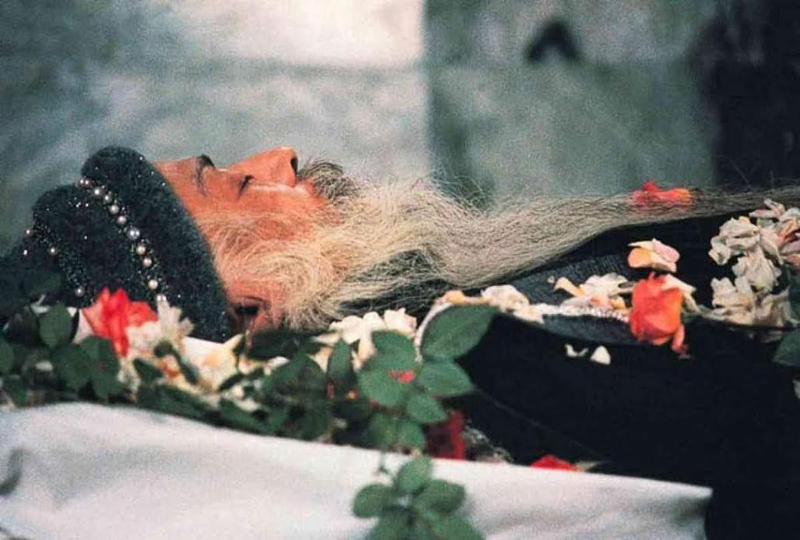

Q: The words that he spoke with you and still stand out in your memory.
A: Yeah, of course. Whatever he said, is true bit by bit. Rajneesh was a prolific thinker, author, philosopher, motivational speaker and premonitioner!
He could foresee the future. Rajneesh would often have premonitions.
Osho was way ahead of his times! Forty years ago Osho Rajneesh talked about:
1. In favour of vegetarianism, against smoking, drinking and drugs abuse
2. He talked about ‘safe sex’ to avoid AIDS. Today AIDS is like a termite, all over the world
3. Osho didn’t believe in the concept of marriage ! Today 70 percent marriages, land up in courts for bitter divorces
4. Osho advocated celebration of life. Between birth and death, there’s only life! So let’s celebrate it.
Q: Why was he so hypnotic?
A: He was hypnotic as his knowledge quotient was extremely high from a young age. In fact, ‘eye to eye contact’ with Osho was a magnificent experience. It would mesmerize everyone. I’m also like Osho; quite hypnotic!
Q: Your thoughts on his legacy.
A: Osho didn’t give power of lineage to anyone follower. He had ensured that no one person would hijack his legacy. He never appointed anyone who would be his successor. Osho said that he’s in the hearts of all believes of Osho!

